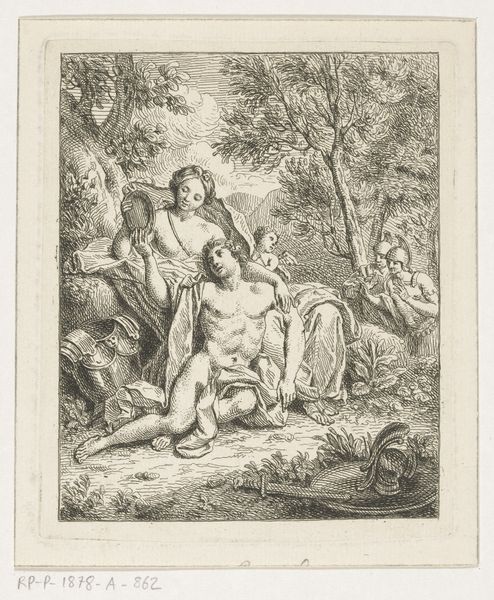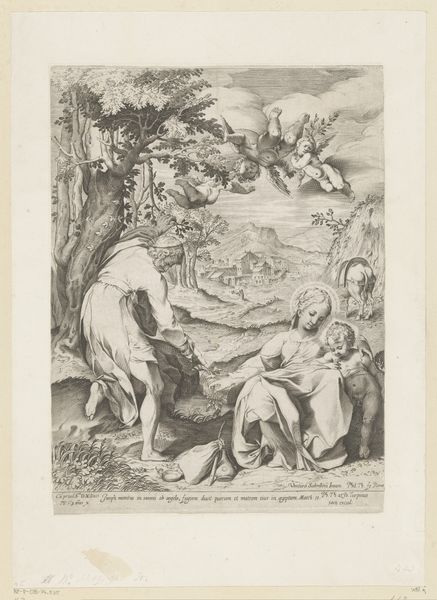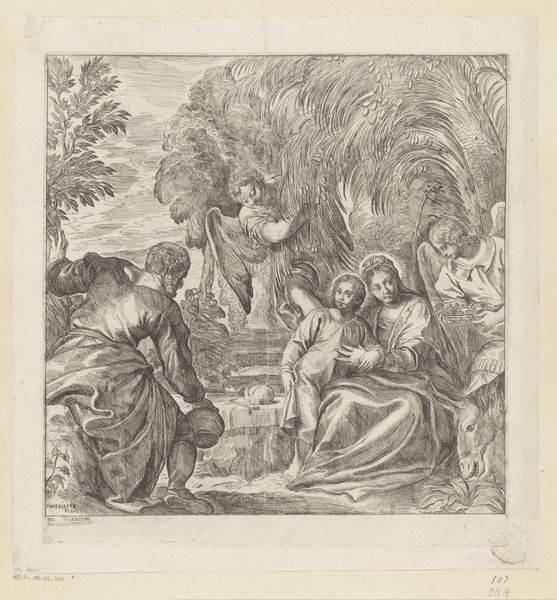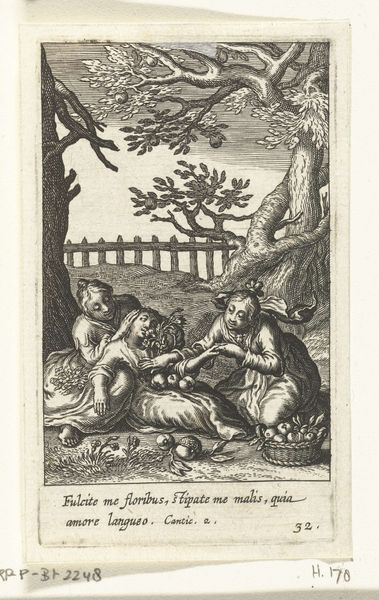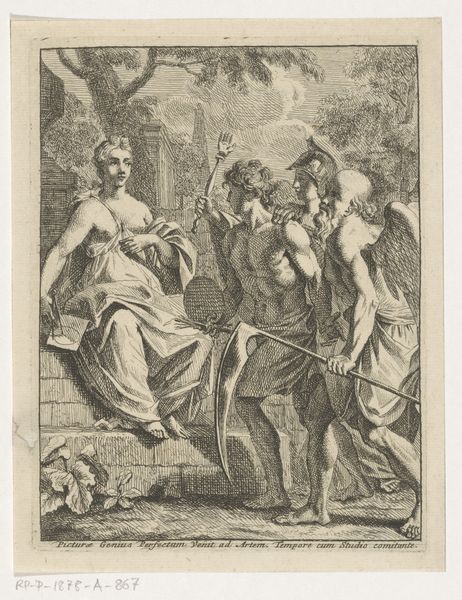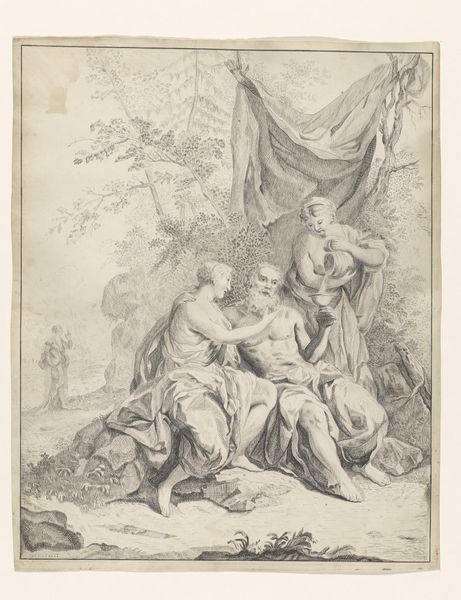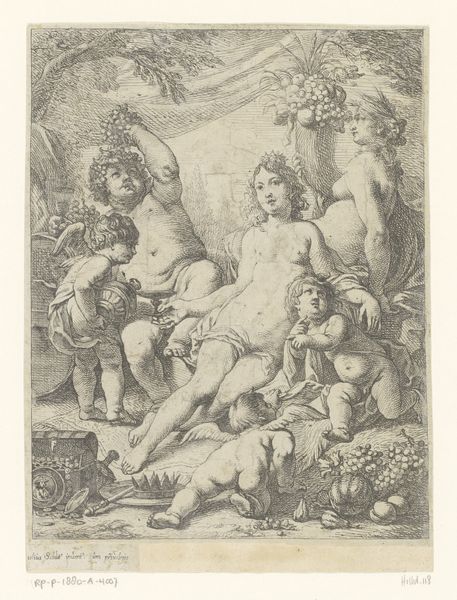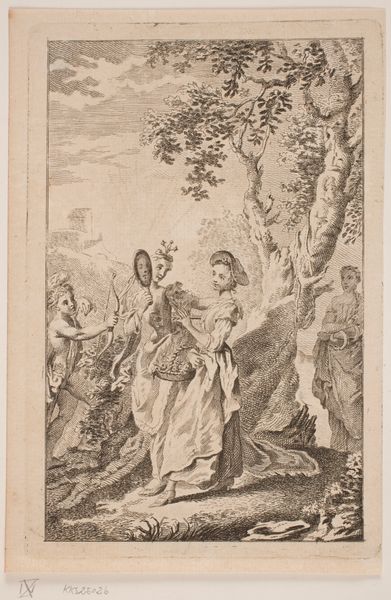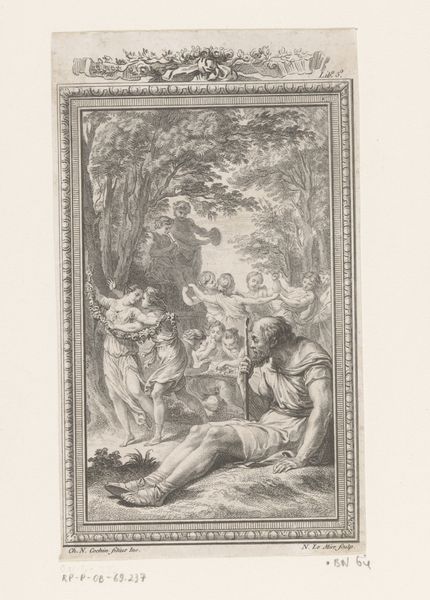
print, engraving
#
allegory
#
baroque
# print
#
landscape
#
figuration
#
history-painting
#
engraving
Dimensions: height 135 mm, width 112 mm
Copyright: Rijks Museum: Open Domain
Curator: I'm immediately drawn to the landscape depicted in this engraving – there's a lushness and dreaminess to it that invites you in. What's your take? Editor: Oh, utterly delightful! A flurry of cherubs! A bit like baroque perfume, isn’t it? Yet, underneath the surface is this strange transformation scene…a theatrical unmasking. Curator: Precisely. What we’re looking at is Louis Fabritius Dubourg's "Vertumnus and Pomona," an engraving from 1731. It depicts a scene from Ovid's Metamorphoses. Editor: Ah, Vertumnus, god of seasons and change! And Pomona, the Roman goddess of fruit trees and orchards. Symbols of abundance, clearly. It's fascinating how even a limited palette like a black-and-white print can convey such opulence. The layers and detail are intense. Curator: Right. He employed incredibly fine lines and cross-hatching to create a sense of depth and volume. But going beyond sheer display, notice that the subject matter—the very core of this Baroque artwork—hinges on transformation, a sort of visual double entendre…a key motif of the time. Editor: That theme sings through! We’ve got disguise, revelation, the erotic charge of the gods mingling with mortals… it all speaks to a desire to destabilize the everyday, to remind us of the forces at play just beyond our perception. Curator: The way the figures are arranged within the landscape is also striking. They’re integrated into the natural world, almost as if they're emerging from it. Do you think the allegory is as effective to contemporary viewers, given the stylistic approach? Editor: Yes and no. Baroque imagery can feel a bit over-the-top to modern sensibilities. Yet these archetypes linger. Think about beauty and the beast – it resonates still. Perhaps these enduring symbols act as psychic triggers, opening doors to forgotten collective stories. The emotional core feels familiar, even if the visual language is stylized and a bit theatrical. Curator: So, we could argue that Dubourg's "Vertumnus and Pomona," though steeped in mythology and Baroque aesthetics, manages to tap into these universal themes of transformation and revelation… ones that keep recurring in culture through art and stories? Editor: I’d say so. This artwork acts as this potent echo chamber, resonating through history with whispered suggestions about change and recognition.
Comments
No comments
Be the first to comment and join the conversation on the ultimate creative platform.
